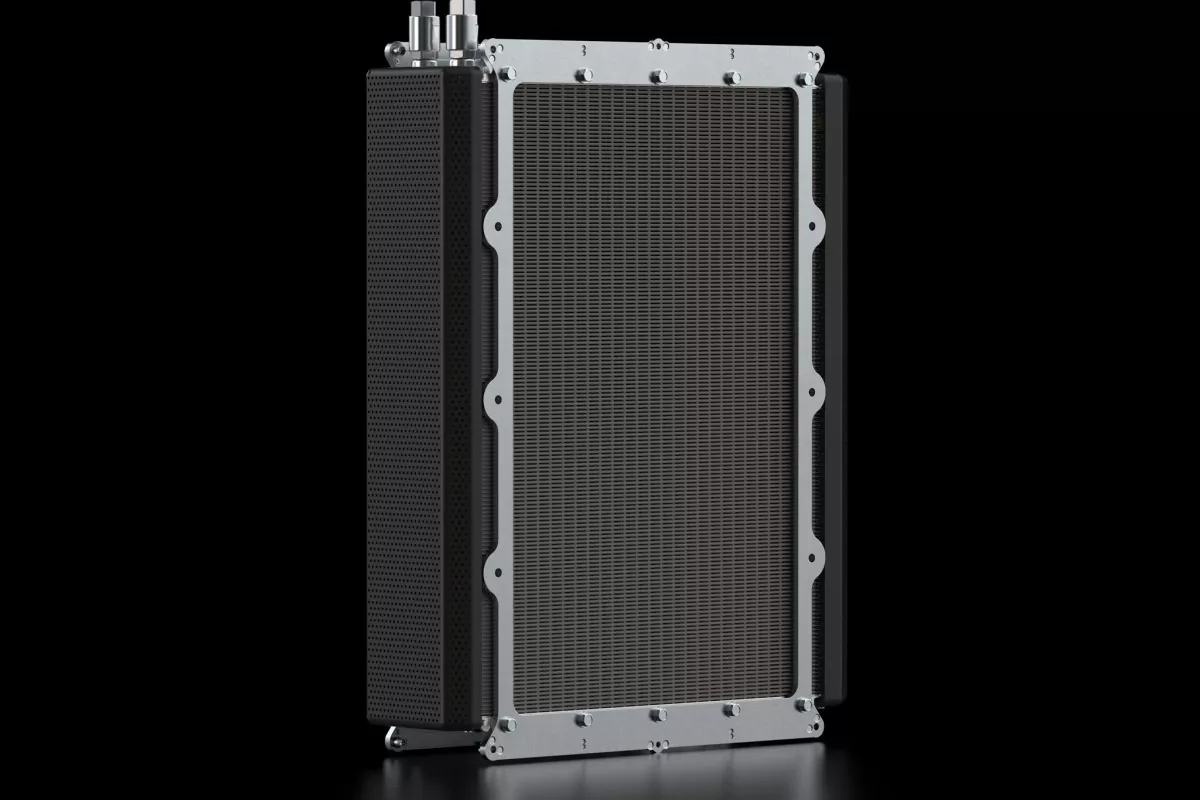HyPoint's aviation-targeted fuel cells were already promising three times the power of a regular fuel cell by weight, but thanks to a new proton-conductive membrane developed in partnership with BASF, their power density is set to jump by another 50 percent.
Yes, BASF – the same company that became a household name in the 1980s making audio cassette tapes. A name most people won't have heard of since CDs took over in the 1990s. As it turns out, BASF is a German multinational chemicals producer that's been around since 1865, and boy is its Wikipedia page an eyebrow raiser.
BASF has spent 156 years making all kinds of chemicals. Dyes, soda, sulfuric acid, ammonia, plastics, urethanes, styrenes, explosives, you name it. It was a member of the IG Farben conglomerate, which, among other things, debuted the world's first tape recorder in 1935.
Under the Nazi regime, IG Farben's Zyklon-B gas, originally a pesticide and delouser, was used in extermination camps during the holocaust. The company also produced chemical weapons such as tabun and sarin nerve gases, and the powerful blistering agent mustard gas. It sure doesn't stop there; BASF's USA division was the second-biggest industrial water polluter in America in 2018, and the fourth-biggest polluter of air, according to PERI's Toxic 100 index. And the company still holds the record for the biggest industrial accident in German history: its Oppau plant blew up in 1921, killing 565 people.
We digress – and this is an enormous and vital company currently employing around 120,000 people and making somewhere around US$70 billion in sales annually. BASF certainly doesn't try to hide from its checkered history.
Anyway, BASF has also been making proton-conductive membranes for some 15 years under the brand name Celtec. Proton exchange membranes, of course, are a key component in hydrogen fuel cells.
It works roughly like this: hydrogen (H2) and Oxygen (O2) gases are placed either side of a membrane that's designed to only allow single, positively charged hydrogen protons to pass through. A platinum catalyst on the hydrogen side splits each H2 molecule into two H+ protons and two electrons. The protons move through the membrane to the oxygen side, and the electrons meet them there after flowing through an electrical circuit, creating current. The electrons, protons and oxygen then combine on the other side to create water.
Now, BASF has come up with a new membrane capable of working at higher temperatures and pressures than before, with stronger mechanical properties to boot. HyPoint, for its part, is developing a unique "turbo air-cooled" fuel cell that's different to traditional designs precisely because it uses higher temperatures and pressures to force more protons through the membrane faster, producing more power.
For a given output power, says HyPoint, it's much lighter than other fuel cells on the market, partially because it doesn't require any cooling gear. This makes it particularly attractive for use in zero-emissions aircraft. It also lasts four times as long, says the company, and works well on lower-purity hydrogen than many other designs.
The two companies have partnered up to test and develop the new BASF membrane, and they're expecting some pretty spectacular results. "The new high-performance fuel cell system," reads a press release, "is expected to achieve more than 3,000 W/kg, an increase of at least 50% over the current system." That's as compared with traditional fuel cells that HyPoint tells us typically deliver between 150-800 W/kg. The new membranes will also make HyPoint's fuel cells even more tolerant to impurities in the hydrogen fuel.
The companies say it should be proven and available to customers by mid-2024. In electric aviation, where weight is critical and every pound saved is a little more range you can fly or a little more cargo you can carry, this kind of optimization project stands to be an important advance in the field.
Hydrogen fuel cell technology will be critical in the race to zero carbon by 2050. It's currently the only viable option for medium-distance electric flight, since batteries are so heavy that they're only suitable for much shorter trips. We wish these two companies the best in their efforts to improve the state of the art.
Check out a short refresher from BASF on how proton exchange membrane fuel cells work below.
Source: HyPoint





